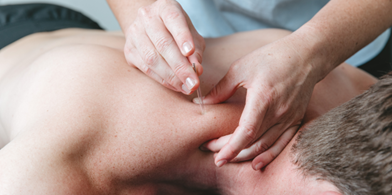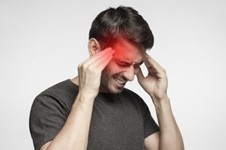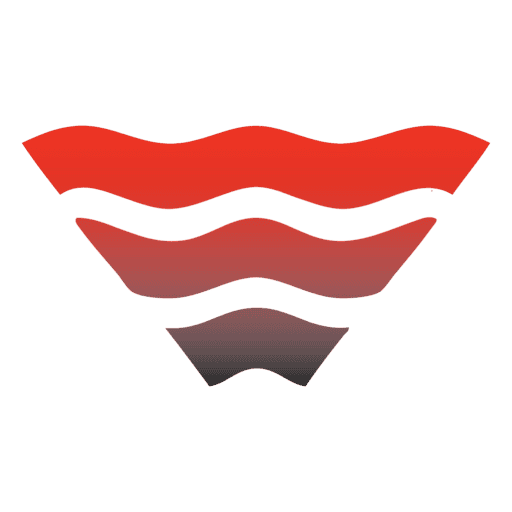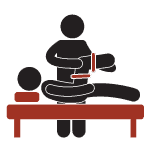Intramuscular Stimulation and Integrated Dry-needling
Contact UsWhat is Dry Needling?

Dry needling is a westernized approach to acupuncture. This treatment involves inserting acupuncture needles into aggravated muscles and myofascial trigger points, to ultimately treat pain. This type of treatment gets its name from dry needling, as it involves the use of a sterile needle with no injections. There are different approaches to dry needling, including intramuscular stimulation and integrated dry needling.
What is Intramuscular Stimulation and Integrated Dry Needling?

Intramuscular stimulation (IMS) and Integrated Dry Needling (IDN) are both dry needling techniques that are commonly used by physiotherapists to treat many different conditions. IMS and IDN are similar in many ways, however their approach and training are slightly different.
Intramuscular Stimulation
IMS is a technique in which a health care practitioner has undergone specific training and obtained an IMS certification. The purpose of IMS is to use an acupuncture needle to insert into a tight muscle to cause relaxation or lengthening of the muscle. This would require inserting the acupuncture needle into the affected muscles or near the nerve root.
The basis of IMS is around neuropathic pain (a.k.a nerve pain). The founder of IMS (Dr. Gunn), outlines that a tightened muscle or muscle in spasm is caused by an irritation of the nerve supplying that muscle. Through inserting a needle into the affected area, it can cause immediate relaxation to the muscle supplied by the irritated nerve – ultimately increase nutrition to that nerve. This can be thought of restoring nerve function, or in layman’s terms re-setting your fuse box.
Integrated Dry Needling
IDN is a technique in which a health care practitioner has to undergo specific training as well. IDN is similar to IMS where an acupuncture needle is used to manipulate a muscle. It involves locating myofascial trigger points, in which will be where the acupuncture needle will be inserted. A myofascial trigger point is a hypersensitive spot within a tight band of muscle tissue. This will often be a tender spot to touch on a muscle, that may create pain in distant areas away from the tender spot (i.e. touching a sore spot on your shoulder, and feeling aching at your elbow). The physiotherapist will locate these myofascial trigger points (there is often times more than one) in your muscles, and will use these as targets for the dry needling.
Conditions Treated with Dry Needling?

- Headaches
- Neck pain
- Low back pain
- Tennis elbow
- Frozen shoulder
- Chronic pain
- Reduced range of motion
- Stiffness in muscles and joints
How does Dry Needling work?
The technique of dry needling creates a small therapeutic injury to the muscle, causing the muscle to grab onto the needle and contract. This type of stimulation can cause a spinal cord reaction, allowing the affected muscle to relax. This will also promote nutrition to the nerve and help to restore normal nerve function. At the same time, this reaction is causing increased circulation to the needled area which helps to bring in the tools to help encourage healing in the affected muscle.
A common question: Does Dry Needling Hurt?

Most people will describe dry needling as unpleasant but not painful. More specifically, it is often felt as a heavy or fullness feeling in the muscle being treated – however, this is different for everyone. The dry needling treatment itself is quick, with needle only being inserted for a few seconds at a time. Quite often, individuals will feel relief after the treatment, or within 24 hours post treatment. Any aches or discomforts experienced after treatment are completely normal, and can be relieved by continued movement and heat application.
Dry needling vs. Acupuncture
These 2 treatment techniques seem quite similar, however they are vastly different. Acupuncture is a technique that stems from Traditional Chinese Medicine practices, that focuses on increase blood flow, improving inflammation and reducing pain. The needles are typically left inserted for around 10-20 minutes. Like dry needling, when combined with other treatment techniques, this can be an effective tool.
How many treatments of Dry Needling will I need?

The number of dry needling treatments will depend on the chronicity of your injury, the severity of your condition, and your body’s own self healing rate. Most people will receive a reduction in pain and improvements within the first 1-2 sessions. However, for others it may take up to 10 treatments to notice a significant improvement. To allow time for your tissues to heal appropriately, your physiotherapist will likely space out treatment of dry needling by a few days or even up to a week.
Dry needling is an effective physiotherapy treatment technique for many different conditions. If you have been dealing with stubborn pain that won’t resolve, or from a chronic injury, dry needling may be right for you! Contact our physio clinic to find out how we can help you.
MANUAL AND MANIPULATIVE THERAPY
Our therapists use a variety of hands on techniques to both accurately assess and efficiently treat patients. Specialized training through the Orthopaedic Division of the Canadian Physiotherapy Association (orthodiv.org) allows for accurate diagnosis and faster recovery. Fellows of the Canadian Academy of Manipulative Physiotherapists (FCAMPT) have taken extensive post-graduate training and have received international recognition in hands on techniques.
manippt.org
CONCUSSION MANAGEMENT
At South Simcoe Physiotherapy we have training in the Shift Concussion Management Program (shiftconcussion.ca). Using this program as a basis, we thoroughly assess the individual systems often effected in a concussion using a variety of tests, as well as cognitive tools such as imPact. Once an accurate assessment has been performed, we develop a multi-faceted rehabilitation strategy to return the individual to optimal function.
PELVIC HEALTH
massage therapy
Massage therapy is a form of hands in treatment that affects the body’s soft tissues such as the muscles, connective tissue, ligaments, tendons and joints. Massage therapy can have therapeutic effects on the muscular, circulatory, and nervous systems. For more information on Registered massage therapy please visit: www.rmtao.com
acupuncture
Acupuncture is rooted in Traditional Chinese Medicine and uses tiny needles which are inserted into various points in the body. Acupuncture stimulates the body’s natural healing mechanisms and is effective in treating a variety of conditions including headaches, back pain, neck pain, various overuse and sports injuries. Our therapists have training in acupuncture through Acupuncture Canada ( https://www.acupuncturecanada.org)
RUNNING ASSESSMENT / GAIT ANALYSIS
Gait analysis and Running Assessments can be useful in determining biomechanical irregularities during either walking or running that are either causing or are caused by a certain condition or injury. Gait analysis can also help to identify inefficiencies that may be reducing performance in runners and perhaps predisposing or contributing to injury.
We use multiple tools to analyze a person’s gait. First, we use our physiotherapy backgrounds and knowledge of biomechanics. By observing someone walking/running/using the treadmill (and perhaps recording them) we can often identify these major faults. A biomechanical exam can also aid in this process through identifying structural limitations, muscle weakness and tone, and a variety of other potential faults. Finally, using training from courses such as those taught at The Running Clinic https://therunningclinic.com/en, can help to consolidate all of this information while allowing us to make recommendations on items such as footwear, training schedules, and other information relevant to your specific situation.
IMS/IDN
Intramuscular Stimulation and Integrated Dry-Needling. Both IMS and IDN are forms of dry needling where an acupuncture needle is inserted into a taut band in a shortened muscle or near the nerve root in order to cause a reflex relaxation of the muscle, a micro trauma to stimulate natural healing and create an action potential to restore normal nerve conduction. This technique can be extremely useful to treat chronic pain, myofascial pain syndromes, many sports injuries, and overuse injuries. For more information visit: www.istop.org
exercise prescription
Exercise is an essential part of all rehabilitation programs. In order to restore normal muscle length and strength, correct biomechanical faults and return to function, exercises need to be specifically tailored to suit individual needs.
custom bracing
shockwave therapy
Shockwave is a non-invasive way to treat many muscular, tendinous, ligamentous, and bone problems that lead to pain and loss of function. Briefly stated it uses strong energy pulses to stimulate increased blood flow and metabolism allowing regeneration of damaged tissue. A phenomenon called “micro-cavitation” occurs where “bubbles’ expand and burst creating a force that penetrates damaged tissue and stimulates cell reparation. Shockwave is especially effective in treating issues that have been unresponsive to other conservative methods.
VIDEO AND TELEPHONE CONSULTATIONS
At a time when social distancing is necessary, we are pleased to be able to offer our exceptional care in an alternative method. Video consultations (think FaceTime or Skype) can be an effective method to assess and treat musculoskeletal and other physiotherapy appropriate impairments. A thorough analysis can be conducted by performing a detailed subjective, observing individual movements, performing simple tasks and special tests, and evaluating the environmental factors which are aggravating the condition. From there, our therapist can devise an appropriate treatment plan including self management strategies, modifications, and exercises appropriate to address your condition. The therapist is easily able to demonstrate the exercises and observe you performing them, and can even send you video demonstrations of the exercises. For those that are unable to access reliable internet, or do not regularly use a computer, telephone consults are also an option.
No doctor's referral is necessary and these sessions are covered by most insurers
NATUROPATHY
Frequently Asked Questions
What is physiotherapy?
Simply stated, physiotherapy is the treatment of deficits and disease without the use of medications. Physiotherapy is useful for the majority of injuries and ailments one might suffer. The goal of our physiotherapists is to reduce your symptoms and allow you to return to function in a timely manner. If you are unsure if your condition is appropriate for physiotherapy, please feel free to contact us.
How do I pay for your services?
Does OHIP cover physiotherapy?
Do I need a doctor’s referral to come and see you?
What do I need to wear for my assessment?
Will my private insurance cover the cost of this treatment?
What if my injuries are as a result of a motor vehicle accident or workplace injury?
- Date of accident
- Claim number
- Adjuster’s name and contact information
- Private health insurance information (if applicable)
- Area of injury
We are able to direct bill your motor vehicle insurance, but please note that all of your private health insurance must be used prior to accessing your motor vehicle insurance. These rules are mandated by the Financial Services Commission of Ontario and not our clinic.
Workplace injury (WSIB): we often treat people as a result of a workplace injury, however, we do not bill WSIB directly. If your injury is part of a WSIB claim, you are expected to pay just as other clients and then submit your invoices to WSIB.


